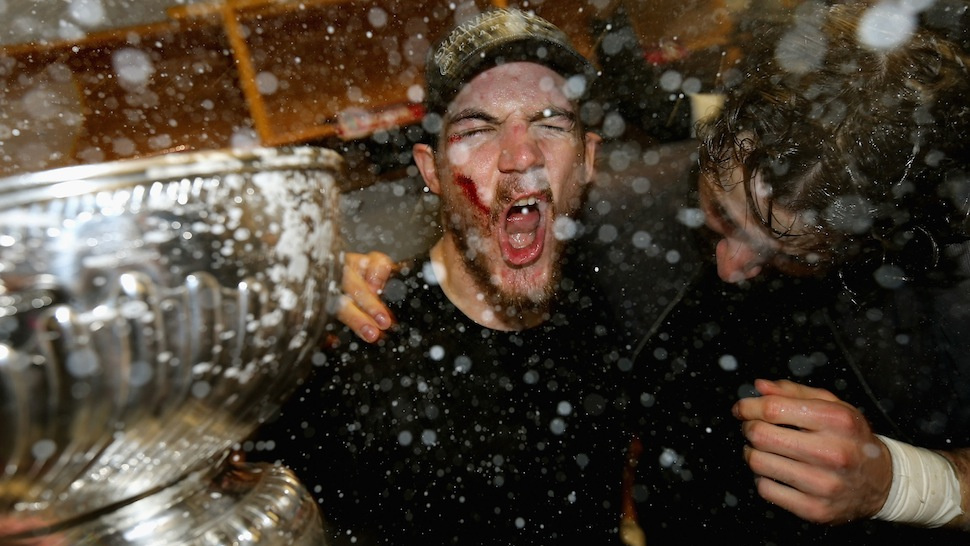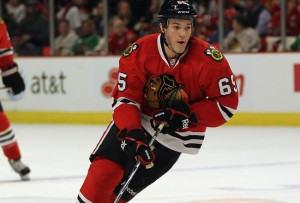Dear Sports Fan,
I had heard hockey fans were tough but seriously, how tough are hockey players? I saw a guy get hit in the face with a puck last night, get stitched up, and keep playing. Sheesh.
Sincerely,
Sam
— — —
Dear Sam,
They are really tough.
Thanks for your question,
Ezra Fischer
Just kidding — we’ll write a bit more about this while we’re on the subject. As the Marx Brother’s line from Monkey Business goes, “How much tough you want? You pay too much, we too much tough.” Hockey players are too much tough. The guy you saw last night is named Andrew Shaw. This was him before the game:
This was Shaw during the game:
And this was him after the game:
So, yeah, they are tough. One thing that is notable about hockey culture, which we mentioned before in our post on Ken Dryden’s article earlier this playoff season about violence in Hockey, is how completely brutal players are to each other. The ethos of hockey allows for a player to target another player who he knows to be injured without any guilt. As a result of this, hockey teams are notoriously silent about who is injured and how badly. During the playoffs you may have heard the phrase “So and so has a ‘upper body injury'” or a “lower body injury” or even at times a “body injury.” This is a compromise between the league which insists the teams give out some injury information and the teams that don’t want to give any out. After the season is over, when there is no reason to hide anything anymore, the list of injuries that players were playing through is often unbelievable:
On the winning Blackhawks, aside from Shaw, Michael Handzus played with a broken wrist and a torn ligament in his knee and Marian Hossa played with a pinched nerve in his neck that left him unable to feel his right foot. The Bruins were at least as injured. Nathan Horton played with a separated shoulder that is going to require surgery and Tyler Seguin will also need surgery on his hip. Patrice Bergeron who was one of those players said to have had a “body injury” almost made that an accurate statement with his broken ribs, torn cartilage and separated shoulder.
There seems to be equal parts honor and lunacy in playing through these injuries but increasingly the lunacy is outweighing the honor when it comes to concussions. Speculation and euphemism about concussions hovered over some players, Jaromir Jagr and Jonothan Toews primarily, but as of yet no one has admitted to having suffered one. Frankly this is where a lot of hockey fans find the line between being impressed with hockey players’ toughness and being concerned for their health and saddened or disgusted by the sport very tough to identify.
Why are hockey players so tough? Tradition has a lot to do with it — there is so much ritual in hockey from the anthem before the games to the hand-shake line after a series is complete — and a lot of that tradition teaches players how to react to and play through pain. I also speculated in the Why Do People Like Hockey post that the very nature of hockey allows for playing through injuries that would be impossible in other sports because players play for 45 second shifts at a time, making it more psychologically possible for them to convince themselves they can overcome pain one more time and then one more time again.
Hoping your reading experience was pain-free,
Ezra Fischer




